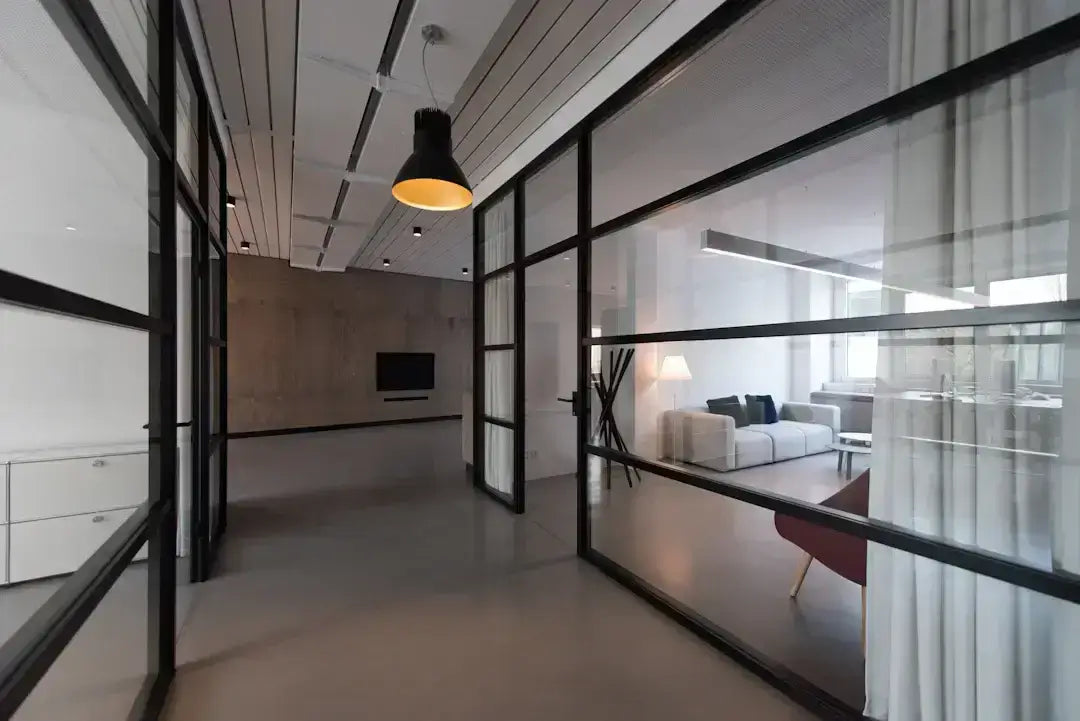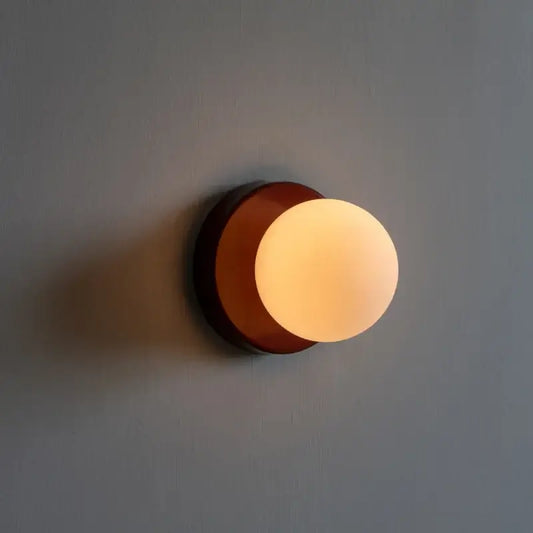
L'influence éclairante: démêler la psychologie de l'éclairage sur l'humeur et la productivité
|
|
Temps de lecture 6 min
Vous avez un compte?
Se connecter pour payer plus rapidement.

Découvrir nouveaux arrivants dans éclairage moderne, décoration d'intérieur, et design scandinave-mis à...
|
|
Temps de lecture 6 min
L'éclairage est bien plus qu'un simple outil pour éclairer une pièce ; il influence fondamentalement notre humeur, notre productivité et notre bien-être général. De la douce lueur d'une table lampe De la douce nuit à l'éclat intense des néons d'un bureau, le type et la qualité de la lumière peuvent influencer notre bien-être et notre efficacité au travail. Plongeons dans la fascinante psychologie de l'éclairage, explorant son impact sur notre quotidien et le rôle des lampes de table dans la création des ambiances souhaitées.
En matière d'éclairage, le cerveau humain réagit différemment aux différents types de lumière. La température de couleur, l'intensité et même la direction de la lumière peuvent induire des réactions émotionnelles et influencer notre état mental. Voici comment :
La température de couleur est mesurée en Kelvin (K) et influence notre perception de la lumière. blanc La lumière (environ 2 700 K-3 000 K) crée une atmosphère chaleureuse, favorisant souvent les sentiments de détente et de confort. C'est généralement le type de lumière émise par les ampoules à incandescence traditionnelles et par les lampes de table conçues pour embellir les intérieurs.
En revanche, la lumière blanche froide (environ 4 000 K - 5 000 K) contribue à améliorer la vigilance et la concentration, ce qui la rend idéale pour les espaces de travail ou d'étude. Le choix de la température de la lumière est crucial pour façonner notre humeur en fonction du moment de la journée, de l'activité et même de la présence d'autres personnes.
La luminosité est un autre facteur important qui influence l'humeur. Si une lumière trop vive peut engendrer inconfort et irritabilité, un éclairage tamisé peut favoriser un sentiment de calme. Notre humeur dépend souvent de l'intensité lumineuse ambiante. Par exemple, les lampes de table qui diffusent une lumière douce et ambiante sont idéales pour créer une atmosphère sereine, tandis qu'une lumière plus vive peut nous revigorer pendant les heures de travail.
Saviez-vous qu'un bon éclairage peut considérablement améliorer votre productivité ? Des études montrent que l'exposition à la lumière naturelle et à un éclairage artificiel spécifique peut améliorer la concentration, réduire la fatigue et même stimuler la créativité. Voici comment appliquer efficacement ces principes :
La lumière naturelle est l'énergie naturelle de notre corps. Ceux qui bénéficient d'un accès abondant à la lumière du jour se disent souvent plus satisfaits de leur environnement de travail. Intégrer la lumière naturelle à votre espace peut favoriser une atmosphère positive et améliorer l'humeur générale. Cependant, lorsque la lumière naturelle est insuffisante ou la nuit, des lampes de table bien placées peuvent contribuer à maintenir cette ambiance productive.
L'éclairage d'appoint désigne un éclairage dédié à des activités spécifiques. Par exemple : lampes de bureau Des lampes de table placées stratégiquement pour lire, écrire ou bricoler peuvent améliorer notre capacité de concentration. Lors du choix de vos lampes de table, privilégiez des options réglables permettant de contrôler la luminosité, réduisant ainsi la fatigue oculaire et favorisant un espace de travail productif.
L'éclairage n'influence pas seulement notre productivité ; il influence aussi considérablement nos émotions. Comprendre l'impact émotionnel des différents éclairages peut nous aider à créer des espaces qui favorisent le bonheur, la détente et le calme.
Comme mentionné précédemment, un éclairage chaleureux est associé au confort et à la détente. Imaginez des lieux comme les cafés ou les salons avec la douce lumière des lampes de table. Elles créent une atmosphère chaleureuse et conviviale, propice aux interactions sociales. Utilisez ce type de lampes dans les espaces où vous souhaitez favoriser les échanges et le confort.
À l'inverse, un éclairage vif et froid peut favoriser l'énergie et la vigilance. C'est utile dans les environnements de travail où la concentration est primordiale. Les bureaux devraient privilégier un éclairage zénithal et un éclairage de travail plus lumineux pour stimuler la productivité. Cependant, l'équilibre est essentiel ; veillez donc à intégrer un éclairage plus doux, par exemple avec des lampes de table ou des appliques pour éviter les contrastes trop marqués qui peuvent engendrer un inconfort.
Une stratégie d'éclairage réussie ne se limite pas au choix d'un seul type d'éclairage. Combiner éclairage d'ambiance, éclairage de travail et éclairage d'accentuation permet de créer un éclairage multicouche, améliorant ainsi la fonctionnalité et l'esthétique de tout espace. Voici comment :
L'éclairage d'ambiance fournit l'éclairage général nécessaire à une pièce. Il constitue la base de tous les autres types d'éclairage. Dans les espaces de vie, les lampes de table peuvent constituer des sources essentielles de lumière ambiante, contribuant à créer une atmosphère confortable.
Comme indiqué précédemment, l'éclairage ponctuel se concentre sur des zones de travail spécifiques. En plaçant des lampes de table à votre poste de travail ou dans votre coin lecture, vous améliorez la visibilité et la concentration sur des tâches précises, que vous étudiiez, travailliez ou pratiquiez vos loisirs.
L'éclairage d'accentuation est avant tout décoratif et sert à mettre en valeur certains éléments ou zones d'une pièce. Il ajoute de la profondeur, du caractère et un intérêt visuel. Utilisez des lampes de table au design unique pour accentuer la décoration et offrir une touche de fonctionnalité.
Lorsque vous choisissez une lampe de table, tenez compte de sa fonction spécifique et de l'ambiance que vous souhaitez créer. Voici quelques conseils pour faire le meilleur choix :
Chaque environnement – maison, bureau ou espace public – nécessite une approche différente de la conception de l'éclairage. Voyons comment adapter l'éclairage à sa fonction et à l'espace :
À la maison, le confort et la détente sont une priorité. Salons, chambres et salles à manger devraient être équipés de lampes de table qui créent une ambiance chaleureuse et favorisent diverses activités comme la lecture ou les rencontres. Une lumière douce et chaleureuse favorise une atmosphère chaleureuse et propice à la détente et à l'intimité.
En revanche, les bureaux bénéficient de systèmes d'éclairage bien pensés, favorisant la productivité et la concentration. Les environnements idéaux combinent un éclairage zénithal et des lampes de table aux postes de travail individuels afin de garantir un éclairage suffisant sans surcharger les employés. Recherchez un équilibre entre une lumière vive et ciblée pour le travail et une lumière plus douce pour les interactions informelles et les pauses.
Les espaces publics tels que les restaurants et les commerces doivent rechercher un équilibre entre éclairage fonctionnel et esthétique. Les lampes de table peuvent donner une ambiance particulière aux salles à manger ou aux salons, tout en créant des espaces conviviaux au sein de l'espace commercial.Tenez compte de la réponse émotionnelle que vous souhaitez susciter chez les clients lors de la conception du plan d’éclairage pour ces environnements.
Avec l’évolution des technologies de la maison intelligente, les options d’éclairage se sont considérablement élargies. Éclairage intelligent Permet de régler la température de couleur, la luminosité et même les programmes d'éclairage. Voici quelques avantages :
Les systèmes d'éclairage intelligents peuvent être programmés pour différentes activités, comme une lumière blanche intense pendant les heures de travail et des tons chauds le soir. Cette flexibilité permet de maintenir une productivité et un confort optimaux tout au long de la journée.
Les ampoules connectées sont généralement des LED, réputées pour leur efficacité énergétique. Cela permet non seulement de minimiser la consommation d'énergie, mais aussi de réduire les coûts d'électricité à long terme.
Les capacités de contrôle à distance vous permettent de régler l'éclairage sans avoir à vous lever, favorisant ainsi la commodité et l'adaptabilité dans n'importe quel espace.
Comprendre la psychologie de l'éclairage et ses profonds effets sur l'humeur et la productivité vous permet de créer des espaces propices au bien-être. En adoptant les bonnes stratégies d'éclairage, notamment des lampes de table adaptées à vos besoins, vous pouvez transformer votre maison et votre bureau en havres de confort et de concentration. Privilégiez les aspects émotionnels et fonctionnels de vos choix d'éclairage, en permettant à chaque lumière de contribuer à votre style de vie et à vos aspirations. N'oubliez pas que chaque lampe peut éclairer bien plus qu'une simple pièce : elle peut aussi mettre en lumière votre humeur et votre productivité, pour une vie plus épanouissante et plus engagée.
Vous aimez notre magazine ? Vous aimerez encore plus notre boutique avec sa sélection d'articles pour la maison, de luminaires modernes, d'ustensiles de cuisine et de décorations murales. Nous vous recommandons également de vous abonner à notre newsletter ou de nous suivre sur les réseaux sociaux pour découvrir nos actualités, nos promotions et nos codes de réduction.

